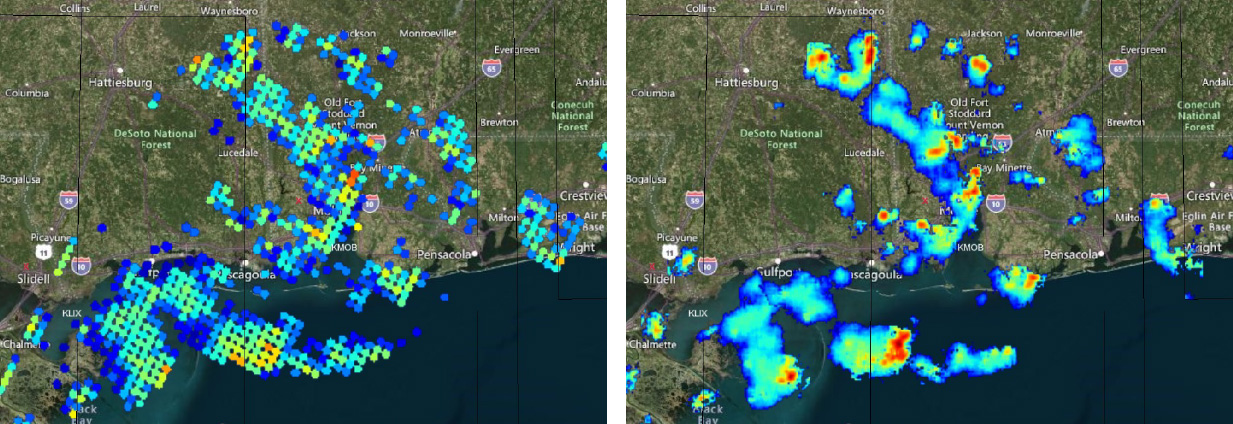CAPRi: An Advanced Analytic Framework for Processing GPM Precipitation Data

Standard GPM data (left) and high-resolution GPM data produced by CAPRi (right). CAPRi increased the speed at which researchers can produce high-resolution precipitation data by a factor of 48. (Image: GPM / NASA)
As many as 40,000 thunderstorms can occur around the world every day, according to NOAA. Forecasting these storms and other precipitation events globally is one of the most challenging – and most important – missions in NASA’s Earth Observatory portfolio.
In 2018, a group of ESTO-funded researchers developed the Cloud-based Analytical framework for Precipitation Research (CAPRi), a tool for processing data from the Global Precipitation Measurement (GPM) mission more efficiently, ultimately reducing the amount of time it takes for researchers to validate GPM data by a factor of 48.
GPM is an ongoing international space mission led by NASA and the Japanese space agency, JAXA, to provide researchers with real-time descriptions of precipitation events at a global scale. Using data from the GPM Validation network, which uses ground-based radar to validate space-based precipitation measurements, CAPRi successfully trained a collection of machine learning algorithms to validate precipitation data automatically.
In addition to reducing the amount of time it takes for researchers to validate data, CAPRi also increased the spatial resolution of space-based precipitation measurements – an important goal highlighted in the 2010 Decadal Survey.
Whereas previous data processing systems could only achieve about five kilometers per pixel, CAPRi achieved resolutions as fine as approximately one kilometer per pixel.
VISAGE, another ESTO-funded project, paved the way for CAPRi’s success. VISAGE helped researchers use machine learning to process precipitation data gathered during airborne field campaigns, and that work influenced CAPRi’s own collection of convolutional neural networks.
Today, CAPRi continues helping the GPM team validate precipitation data gathered by space-based sensors, but it could someday contribute to other NASA science missions. The same CAPRi analytic framework that trained machine learning algorithms to process precipitation data more efficiently could also train machine learning algorithms to process a wide variety of Earth science data sets.
ESTO’s Advanced Information Systems Technology (AIST) program funded this research.